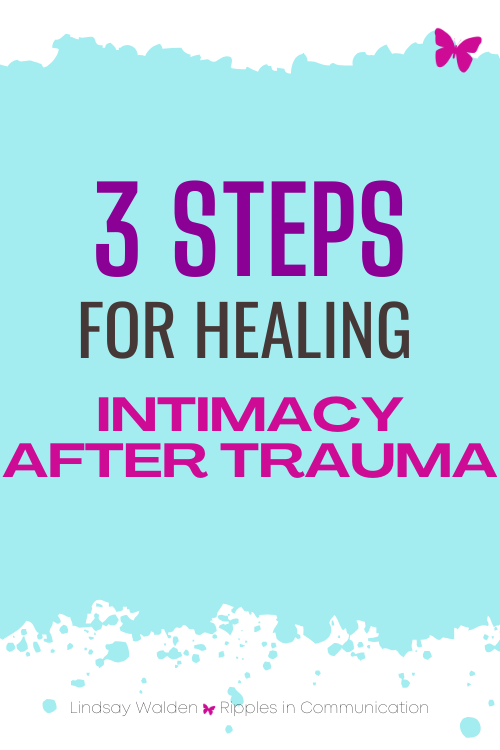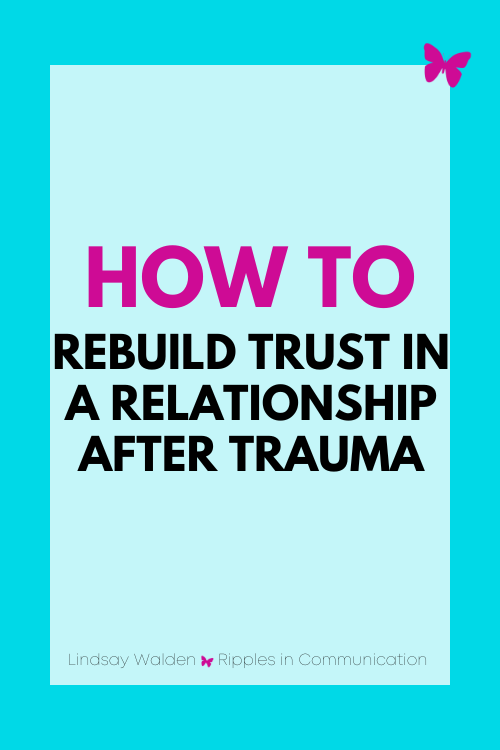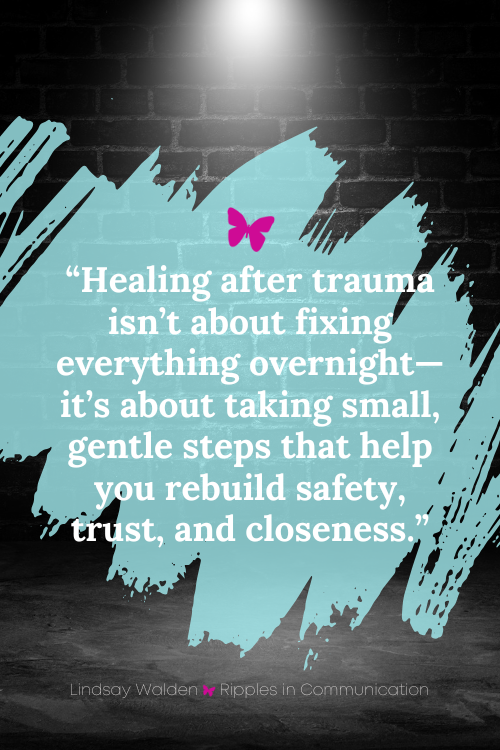Simple Steps for Healing Together and Rebuilding Trust and Intimacy After Trauma
Trauma, whether it’s from a specific event or a series of painful experiences, can create lasting changes in how we feel, react, and connect with others. It’s not just about feeling hurt; trauma actually changes how our brain operates, especially in areas related to trust, safety, and intimacy. When you’re carrying trauma, these changes can make it challenging to let down your guard and feel close to someone else, even if you want to.
Have you gotten my FREE Relationship Communication Guide yet? Start building an authentic, conscious, and thriving relationship with your partner TODAY. Say goodbye to misunderstandings, conflicts, and missed opportunities and dive in and learn how to communicate better for a deeper connection. These are the same tips and practical advice I give to my clients every day. With this guide, you'll be equipped to navigate any communication challenge and build a strong and fulfilling bond with your partner. Click the button below to enter your email address and I will send the guide to your inbox right away!
In Cognitive Neuro Therapy (CNT), we see trauma as something that shifts the pathways in your brain. Think of it like a road that’s suddenly blocked—your brain tries to find new routes to protect you. These new routes may cause you to be more guarded, defensive, or anxious, even with someone you love. But with patience and intentional actions, you can gently shift your brain back to a place of trust and closeness.
3 Simple steps to get closer after a traumatic event and offers powerful tools for healing intimacy through Cognitive Neuro Therapy
3 Steps to Help You and Your Partner Rebuild Trust and Intimacy After Trauma
1. Create an Emotionally Safe Space
To start, think about what “safety” means for you emotionally. Trauma often makes us feel vulnerable or afraid of being hurt again. In order to heal, you need an environment that feels safe, calm, and non-judgmental.
Here’s how you and your partner can create that space:
Practice patience: Healing takes time. Rushing to “fix” things often makes it harder. Let each other go at a pace that feels comfortable.
Show empathy: Listen with an open mind and heart. Recognize each other’s feelings without trying to minimize them.
Avoid judgment: Everyone heals differently. Avoid criticism, which can make it harder for your partner to open up.
From a Cognitive Neuro Therapy perspective, emotional safety helps activate the brain’s “calm center.” When you feel safe, your brain isn’t in “fight or flight” mode, which makes it easier to connect with your partner.
2. Communicate Consistently and Gently
Communication is key in rebuilding trust. After trauma, it’s normal to struggle with sharing emotions or asking for what you need. Setting a routine for gentle, open communication can make a huge difference.
Here are some ways to practice gentle communication:
Use open-ended questions: Rather than asking yes or no questions, try asking questions that allow for more sharing, like, “How did today feel for you?”
Be mindful of your tone and body language: A calm tone and relaxed posture show that you’re listening and that it’s safe for your partner to be honest.
Start with small daily check-ins: Just sharing a little each day, like your favorite part of the day, can help both of you feel more connected.
CNT emphasizes that consistent, gentle communication helps rebuild the brain’s “trust circuits.” Think of each conversation as building a bridge back to emotional closeness.
3. Reconnect Gradually with Physical Intimacy
Physical closeness can be a sensitive area for those healing from trauma. It’s important to go slow and respect each other’s boundaries. Rebuilding physical intimacy doesn’t need to start with something big—small, simple gestures can be incredibly powerful.
Learn how to recover intimacy and connection after going through trauma and explore ways to feel safe and open up again in a relationship.
Here’s how to ease back into physical closeness:
Start with non-sexual touches: Holding hands, a light touch on the shoulder, or a warm hug can start to re-establish physical comfort.
Practice the 20-second hug: A 20-second hug releases oxytocin, a hormone that helps us feel connected and safe. Start with shorter hugs and build up to 20 seconds over time.
Communicate your comfort levels: Share what feels okay and what doesn’t. This can help each of you feel respected and understood.
Taking these steps gradually gives your brain a chance to associate touch with safety rather than fear. In CNT, we find that these small gestures help strengthen the brain’s “bonding pathways” without feeling overwhelmed.
Healing from trauma takes time and small, intentional steps.
Real-Life Example: Anna and Gene’s Journey
Let’s look at how these steps worked for Anna and Gene. Anna had been through a traumatic relationship in the past, which made it hard for her to trust and open up. When she started a new relationship with Gene, she often felt anxious or pulled back, even though she loved him deeply.
Gene wanted to support Anna, so they decided to try a few things together:
Creating Emotional Safety: Every evening, they would sit together and talk about their day. Gene let Anna know she could share anything without fear of judgment.
Practicing Gentle Communication: They made an agreement to check in daily, even if it was just a few words about how they felt. Over time, these small moments built a strong sense of trust.
Gradual Physical Closeness: They started with small touches, like holding hands. Eventually, they began practicing the 20-second hug exercise, which helped Anna feel physically close and safe without pressure.
Through these small, consistent steps, Anna began to feel more secure, and Gene felt more connected. Cognitive Neuro Therapy principles helped them reconnect by focusing on building safe, trusting habits in their everyday lives.
Why Cognitive Neuro Therapy Makes a Difference
Trauma can make it feel like there’s a wall between you and those you love. Cognitive Neuro Therapy helps break down that wall by targeting the brain’s pathways related to fear, safety, and connection. When you take small, intentional steps in communication and physical closeness, your brain begins to rewire itself, making it easier to trust and open up again.
With Cognitive Neuro Therapy, you’re not just working on the surface. You’re digging down to the core of what keeps you feeling stuck and then giving your brain a chance to rebuild connections that support love, trust, and intimacy.
Taking the First Step
Healing after trauma isn’t about fixing everything overnight—it’s about taking small, gentle steps that help you rebuild safety, trust, and closeness. Remember, you don’t have to do it alone. By taking the time to create emotional safety, practice gentle communication, and reconnect physically, you’re giving your relationship a chance to grow stronger and more resilient than ever.
If you’re feeling ready to work on rebuilding trust and intimacy in your relationship, consider reaching out for a Cognitive Neuro Therapy session. We’ll focus on practical, science-backed steps that help you feel safe, connected, and in control of your healing journey. Together, we’ll create a path that leads you closer to the relationship you desire. I offer a free 15-minute chat to see if taking the next step is the right one for you.
MORE LIKE THIS
Navigating Love After Abuse: Why Your Caution Is Valid
How to Embrace Self-forgiveness in Relationships
Forgiveness Beyond Apologies: Navigating Personal Growth And Healing In Relationships








